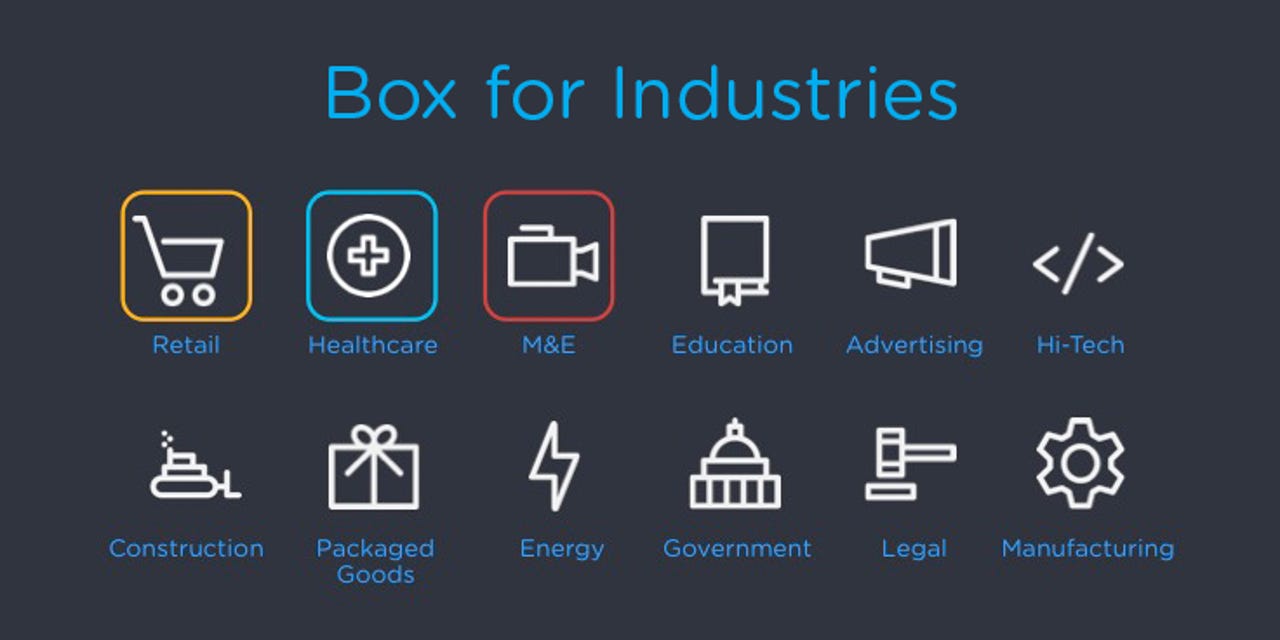Box looks to revamp business processes with Workflow; Office 365 tie-in going live


SAN FRANCISCO — After years of striving to revise how employees store and share content in the cloud, Box is looking to reimagine business processes altogether.
Speaking at Wednesday morning's keynote, Box CEO Aaron Levie reiterated his company's focus on delivering enterprise software with "consumer-grade design."
Box: How Aaron Levie and his childhood friends built a $2 billion business
"It's our job to make sure you can get to your data wherever you want," Levie promised.
Enter Box Workflow, which the company co-founder boasted will dramatically change how to do business in the cloud.
Annie Pearl, senior product manager of enterprise at Box, demonstrated how Workflow was built on an open platform with an intelligent and rules-based approach. These rules break down to value, time and logic.
Workflow stems from Box's acquisition of dLoop last November in order to boost its security and data analytics offerings. Essentially, the combination provides new automation and metadata features so companies can run business processes on top of the Box platform.
These processes include invoice processing, digital asset management, contract management and approvals, and other operating procedures.
Box Workflow is scheduled to go live in 2015.
Looking at the bigger picture, Levie introduced Box for Industries, designed to accelerate innovation within a business no matter what industry it is in.
"Yes, you want the same usability and experience when delivering these tools," Levie explained. "But how you apply them tends to be different."
According to Levie, Box wants to tailor these tools by industry based on specific opportunities via industry-specific apps, implementation and domain expertise — all built on top of and powered by the Box platform.
The Los Altos, Calif-headquartered company already has plans to deploy Box for Industries within a dozen verticals from energy to government, but it will initially focus on retail, healthcare, and media and entertainment.
"Yes, you want the same usability and experience when delivering these tools," Levie explained. "But how you apply them tends to be different."
Using retail as an example, user can tap into and edit metadata templates linked to individual products and seasonal lines when collaborating with vendors and advertisers at external organizations.
Following up on some announcements earlier this year, Levie noted Box wanted to integrate with the "fastest growing application within the enterprise." Laughing that Candy Crush Saga was the first result, Levie said Box moved onto the second top result: Microsoft Office 365.
"Microsoft is taking a much more open stance. They are becoming more interoperable," Levie admitted.
Box for Office 365 is going live in beta for desktop immediately.
Updates are also on the way for notetaking product Box Notes and Box Preview, including the addition of checklists, tables, and version history for the former and annotations on the latter.
More than 240,000 businesses, 27 million users, and 99 percent of the Fortune 500 are now actively using the Box platform. The private company, expected to follow through on its IPO plans by the end of the year, has also grown its developer base to more than 47,000.
"If Microsoft just closed their contract with us, we'd be at 100 percent," Levie joked.
The annual summit itself has grown exponentially over the last four years since the first iteration in 2011.
With more than 5,000 people registered for BoxWorks 2014, Box's marketing chief Whitney Bouck joked the small base of attendees at the first show could fit into a breakout room at the cavernous Moscone Center convention hall.
"We're trying to reimagine how enterprise software works," Levie insisted. "That's the whole point of this conference."
Levie recapped how Box has had "more than a decade" of time and experience to brainstorm and build upon this topic.
Highlighting how dramatically the digital scene has changed in that time, Levie cited that there are now more than 1.75 billion smartphones and 2.9 billion people online overall.
More devices, more internet connectivity, and more storage efficiency have together changed everything about how we work, Levie argued, asserting that "every single business process" today relies on someone on a mobile device and sharing content on a global basis.
Katzenberg posited, "Technology is the canvas, and the paint brush, of how we do our storytelling."
Citing research from Good Technology, Levie noted that over 700 cloud applications are deployed by the average enterprise with more than 76 percent of businesses now supporting BYOD, or "Bring Your Own Device."
"As a response, IT is putting users at the center of the technology strategy," Levie observed. "Leading companies of all sizes are embracing this user-centric approach."
Earlier during the keynote session, Levie opened with a casual fireside chat opposite Dreamworks CEO Jeffrey Katzenberg, who was on his way to Beijing immediately following the interview.
Dreamworks uses Box internally with approximately 1,100 users on the cloud collaboration platform.
The pair of chief executives batted about jokes covering early 1990s Disney films to Silicon Valley stalwarts. Katzenberg even asserted that Dreamworks came up with the first telepresence software back in 2011, named Halo.
"HP bought it. Cisco ripped it off," Katzenberg quipped.
On a more serious note, Katzenberg reflected how cloud software technology has made filmmaking (notably animation) faster, cheaper and more efficient.
Katzenberg posited, "Technology is the canvas, and the paint brush, of how we do our storytelling."
Image via The Box Blog